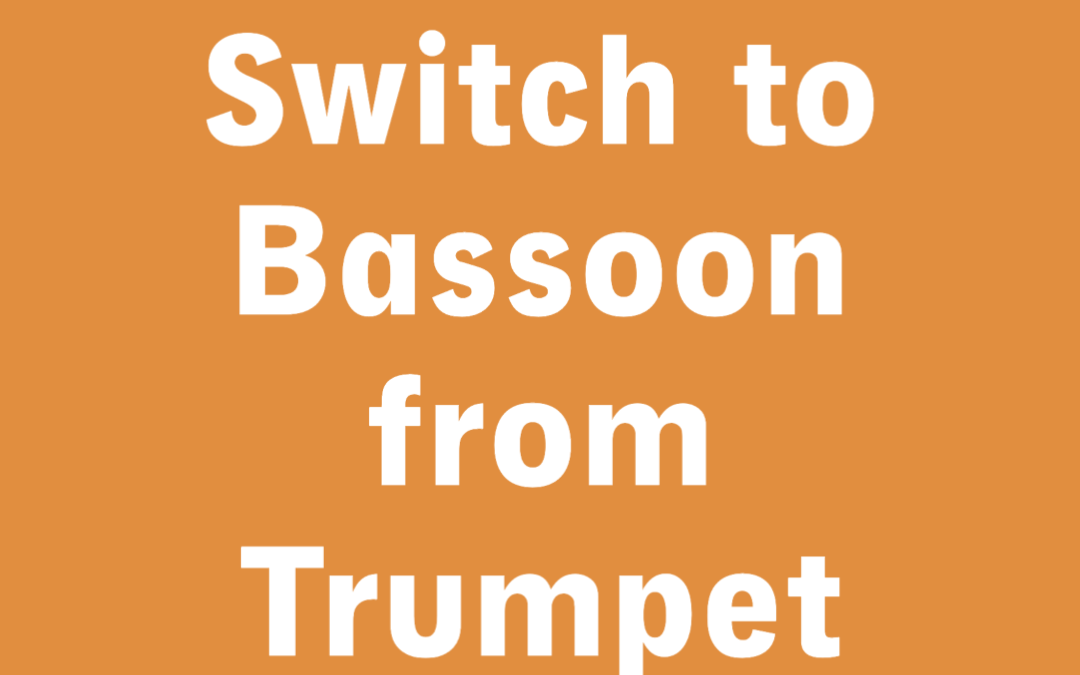Could you think of two band instruments with more differences than the bassoon and the trumpet? They are in different in instrument families, produce sound differently, and they play in different ranges, clefs, and parts in ensembles! However, no difference is too great if a students wants to play the bassoon. I started on the trumpet in my middle school band class and if I could make the switch to bassoon, so can you! Watch the video below and keep reading to learn how to get started.
Embouchure (01:10)
It is helpful to think about the mouth being like the opening of a drawstring bag that closes enough to create a round seal around the reed, but never pinches or bites the reed. Follow these steps to create a bassoon embouchure:
- Make a whistling face (or pretend like you can whistle). What this should do is push your lips slightly forward and bring the corners of your mouth in to create a round aperture.
- While you are making that whistling face, take your finger and roll your bottom lip just slightly over your bottom teeth to make a cushion for the reed to sit on.
- Put the reed in your mouth and bring your top lip just slightly forward in front of your bottom lip. This step may happen naturally when you make your whistling face, so you will want to use a mirror to determine what your embouchure looks like. The top lip simply acts as a cover to the top of the reed, so it doesn’t need to apply any pressure. The bottom lip is the primary support and cushion for the reed.
One of the things that makes the bassoon embouchure unique from other instruments is that it is very “tall” and open. In order to produce a good sound and avoid being sharp, there needs to be quite a bit of space in the oral cavity.
Articulation (02:21)
The tip of the bottom blade of the reed will make contact with just behind the tip of the top of the tongue. While tonguing, think about using a “doo” or “doh” syllable with the mouth shape. This helps to create enough space in the mouth and throat.
The most important thing to creating a good bassoon sound is the air support. The articulation lightly interrupts the air stream as you are playing, but it never stops the air completely. Practice tonguing on the reed by itself to better understand this concept.
Reeds (03:51)
Bassoon uses what is called a “double reed.” All this means is that there are two pieces of cane (type of wood) that vibrate together to make sound. You must soak your reeds completely in water for a couple minutes before trying to play on them. Make sure that you are changing the water out of your reed soaker container at least once a day. You will periodically need to purchase new reeds because yours will wear out over time, depending on how often you’re playing on them. When you are finished playing, be sure to store the reeds in a case or container that is NOT airtight. There needs to be some sort of ventilation so that the reeds do not become moldy with so much moisture.
Reading Bass Clef (05:23)
Switching to reading bass clef might be a challenge. To learn the names of the notes, use these phrases to label the lines and the spaces on a music staff:
- Lines: Good Boys Do Fine Always
- Spaces: All Cows Eat Grass
Watch the video to see what these phrases look like on the bass clef staff!
Hopefully these tips will help you to get started playing. Remember that it takes time, patience, and a lot of thoughtful practice to get better at the bassoon! If you’re looking for more resources and support playing bassoon, be sure to subscribe to my email list below!


Recent Comments